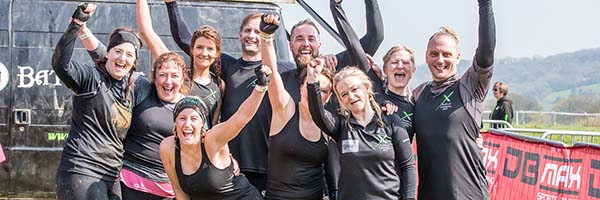Obstacle Course Racing is not just about endurance. It combines speed, strength, agility and mental toughness, making it one of the most demanding sports. For competitive OCR athletes, training is meticulously planned aimed at optimisng each of these. Here’s an in-depth look at how you can train for success in OCR.
1. Periodisation Training
To avoid plateauing focus on periodising your training. This means dividing your whole training schedule into specific phases, each with a particular focus. Typically, these phases include:
- Base Phase: Focus on building general strength and aerobic base with long, steady workouts and basic strength training
- Build Phase: Introduce more specific training that resembles the race demands, such as interval training and circuit workouts that combine running with strength exercises
- Peak Phase: Train at race pace with workouts that mimic the race environment and obstacles as closely as possible
- Taper Phase: Reduce training volume to allow the body to recover and peak on race day
2. Strength and Power Development
Strength is crucial for overcoming obstacles efficiently. Key exercises include:
- Pull-ups and Dead Hangs: Essential for developing grip strength and upper body endurance
- Heavy Carries: Practice with sandbags, logs, or weighted vests to simulate carrying heavy objects over varied terrain
- Olympic Lifts: Exercises like clean-and-jerk and snatch improve explosive power, crucial for obstacles that require jumping or quickly hoisting oneself up
3. Agility and Technical Skills
Agility training helps an athlete maneuver through obstacles more swiftly and with greater confidence. Incorporate:
- Ladder Drills: Enhance foot speed and coordination
- Hurdle Drills: Improve jumping technique and agility
- Technical Obstacle Practice: Regularly train on mock obstacles or at specialized OCR training facilities to hone technique and reduce time spent on each obstacle during races
4. Endurance Training
Cardiovascular endurance is foundational for OCR success:
- Long, Slow Distance Runs: Build endurance by running longer distances at a moderate pace
- Interval Training: Mix short, high-intensity bursts of speed with recovery periods to improve VO2 max and lactate threshold
5. Mental Toughness Training
OCR demands not just physical but also mental resilience:
- Visualisation: Regularly visualise overcoming obstacles and finishing races to build mental toughness
- Stress Inoculation: Train in uncomfortable conditions or at unexpected times to adapt to the unpredictability of race day
6. Nutrition and Recovery
Optimal performance is supported by proper nutrition and recovery strategies:
- Nutrition: Focus on a balanced diet rich in carbohydrates for energy, proteins for muscle repair, and fats for longer-lasting fuel. Hydration is also crucial
- Recovery: Incorporate active recovery days, utilize foam rolling, massage, and ensure adequate sleep to allow muscles to repair and grow
7. Simulation Training
Before a major race, simulate the race day:
- Mock Races: Set up a course that mimics the upcoming race’s obstacles and terrain as closely as possible. Use this to gauge fitness levels and adjust the final weeks of training
- Race Pace Runs: Regularly include runs at your expected race pace to condition your body and mind for what is to come
By integrating these advanced training techniques, competitive OCR athletes can enhance their performance and elevate their racing to new levels. Remember, consistency is key in OCR training, and the integration of diverse training modalities will prepare you for the multifaceted challenges of obstacle course racing.
Back to Blog



